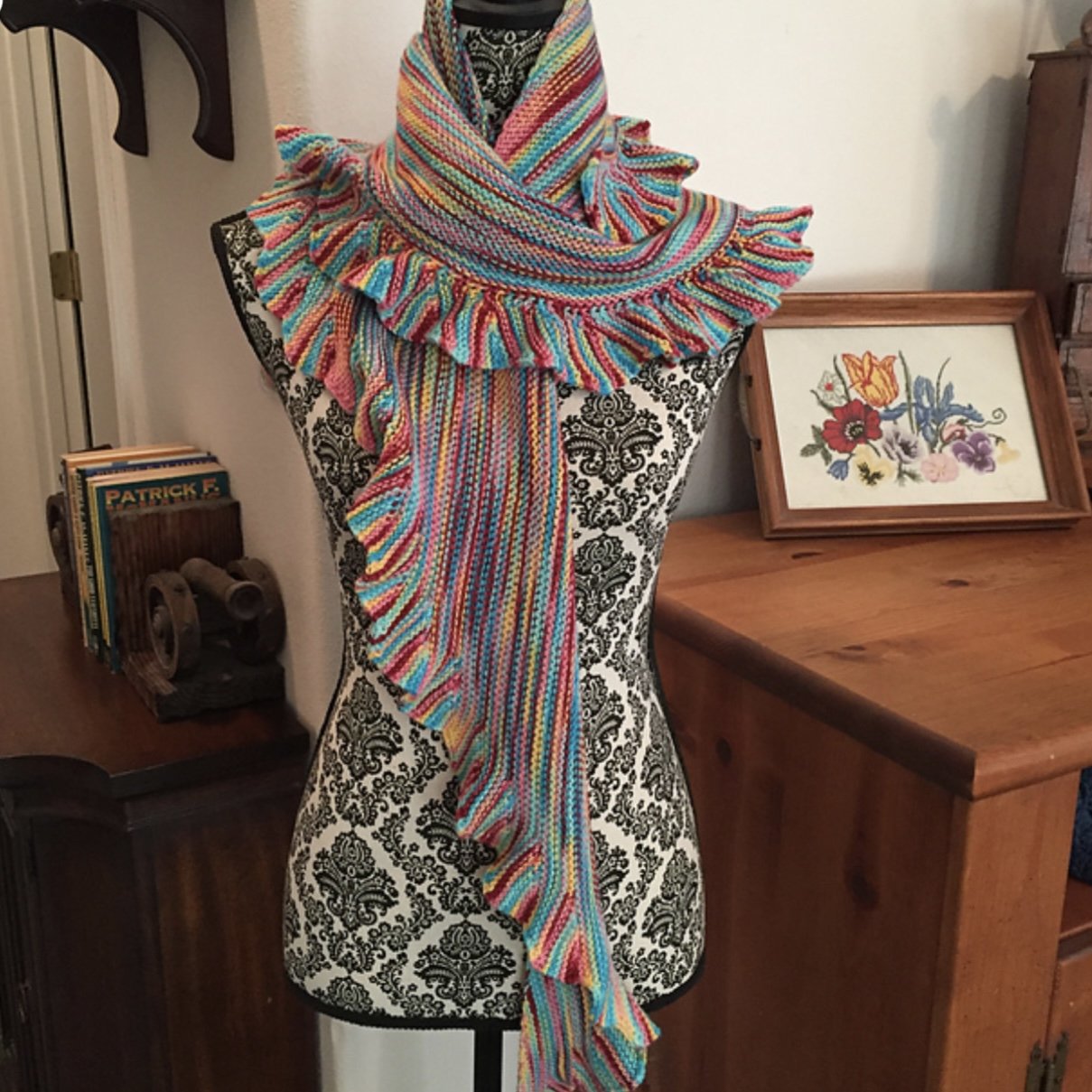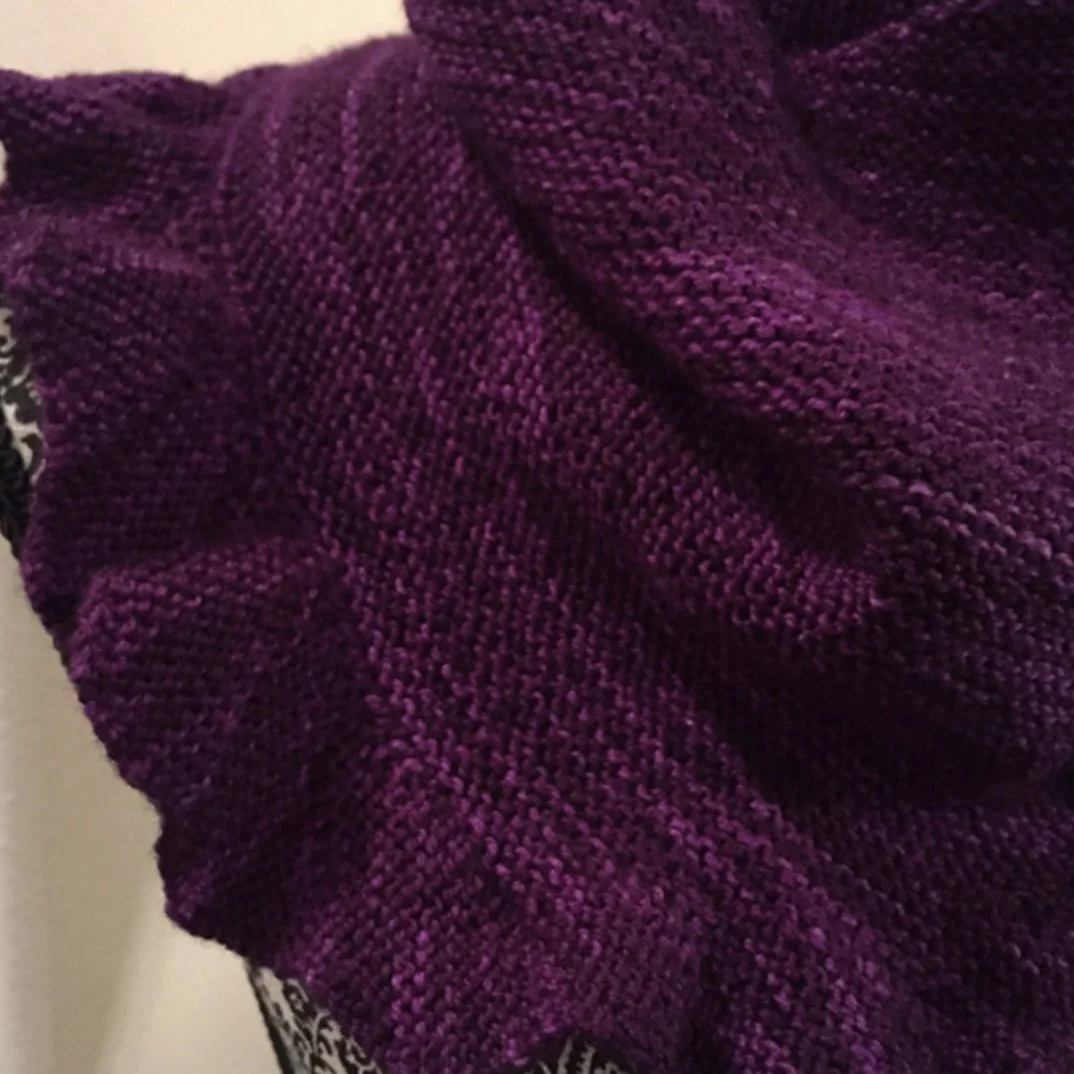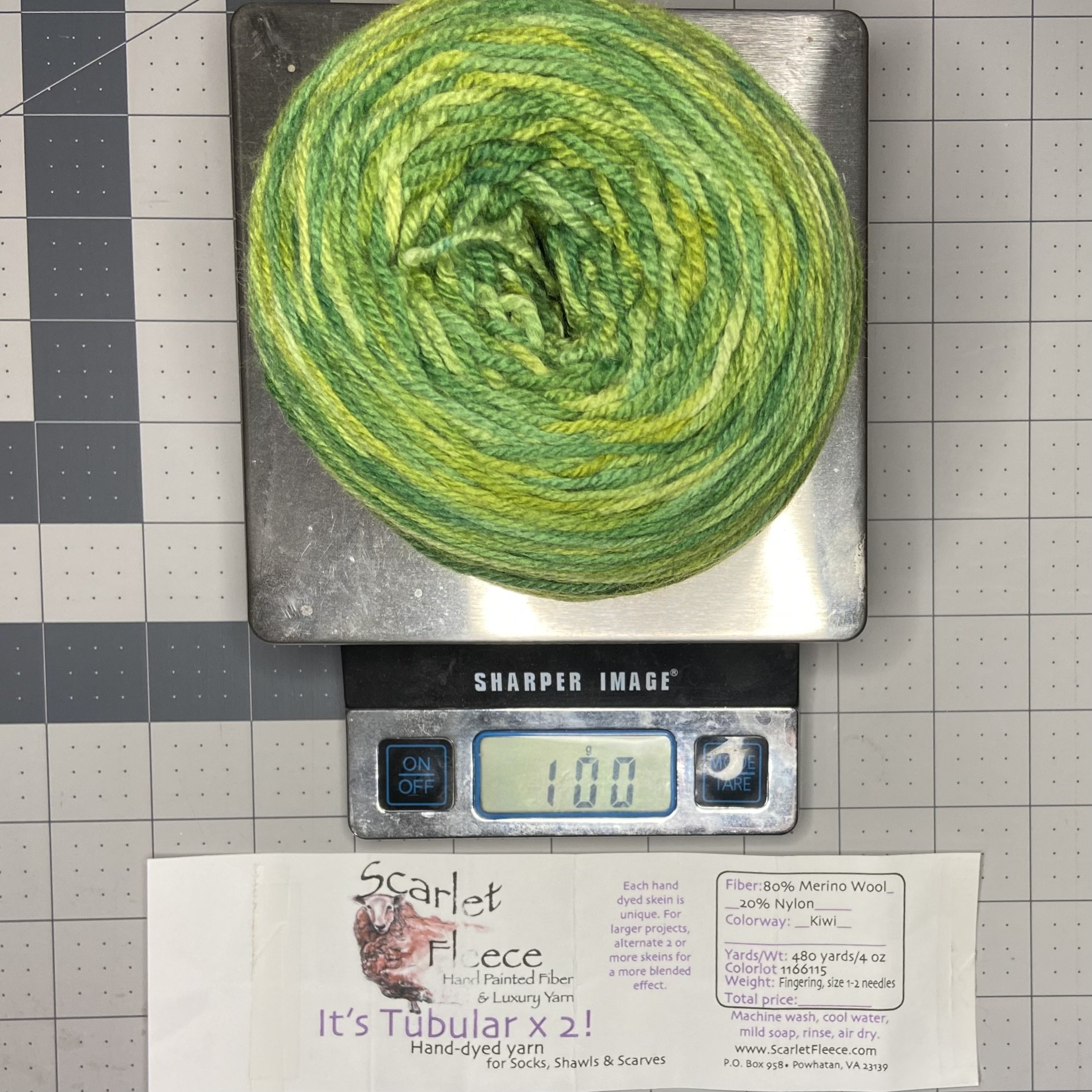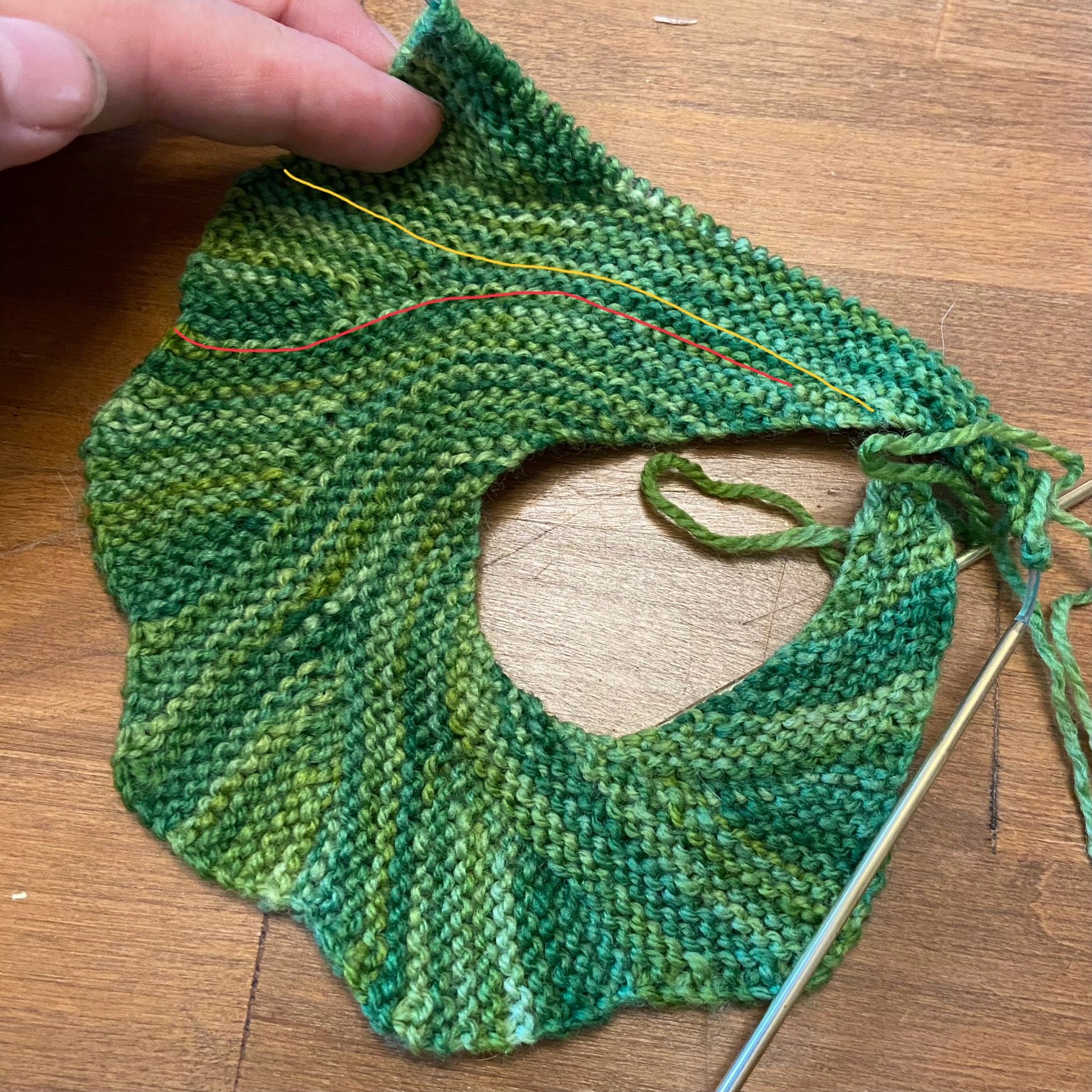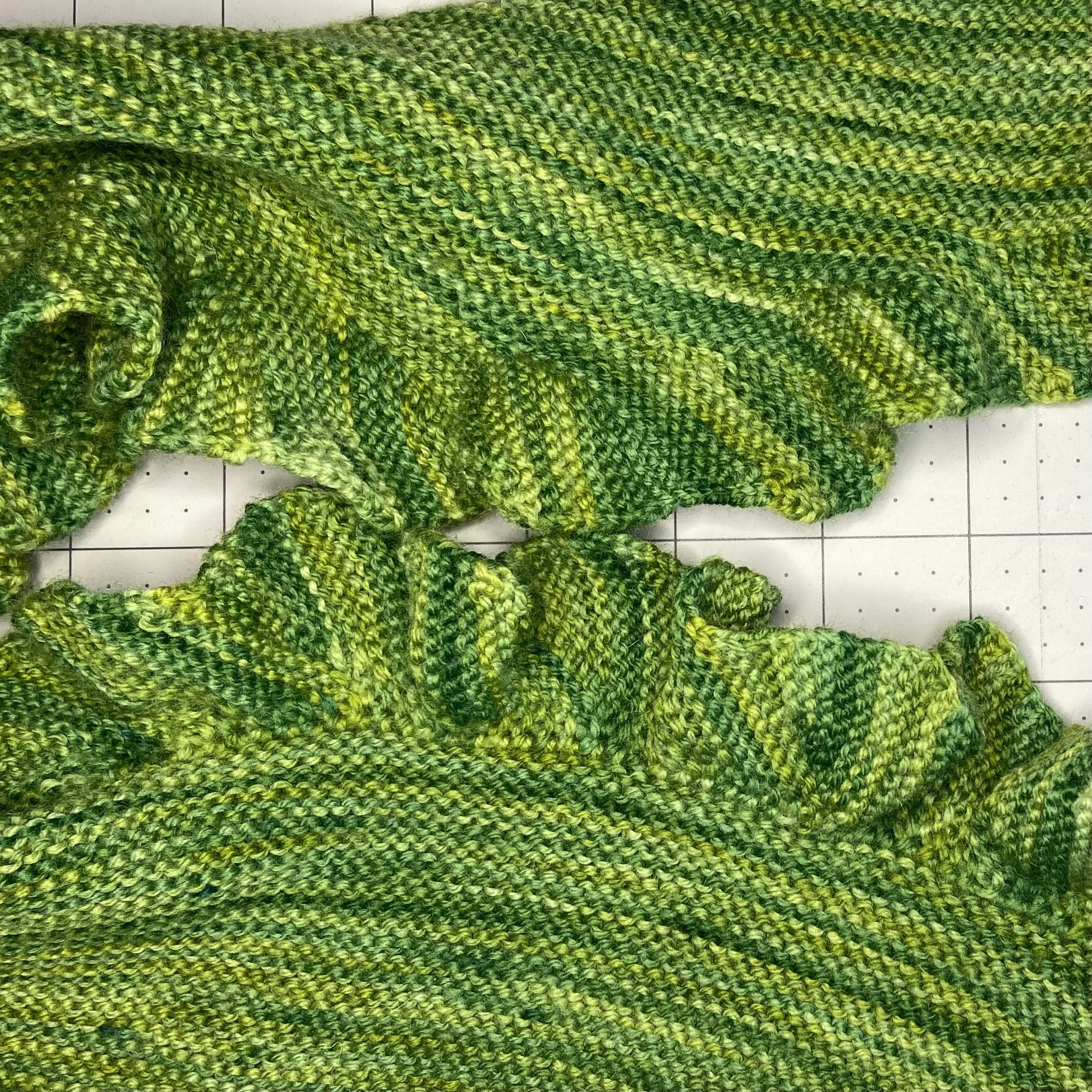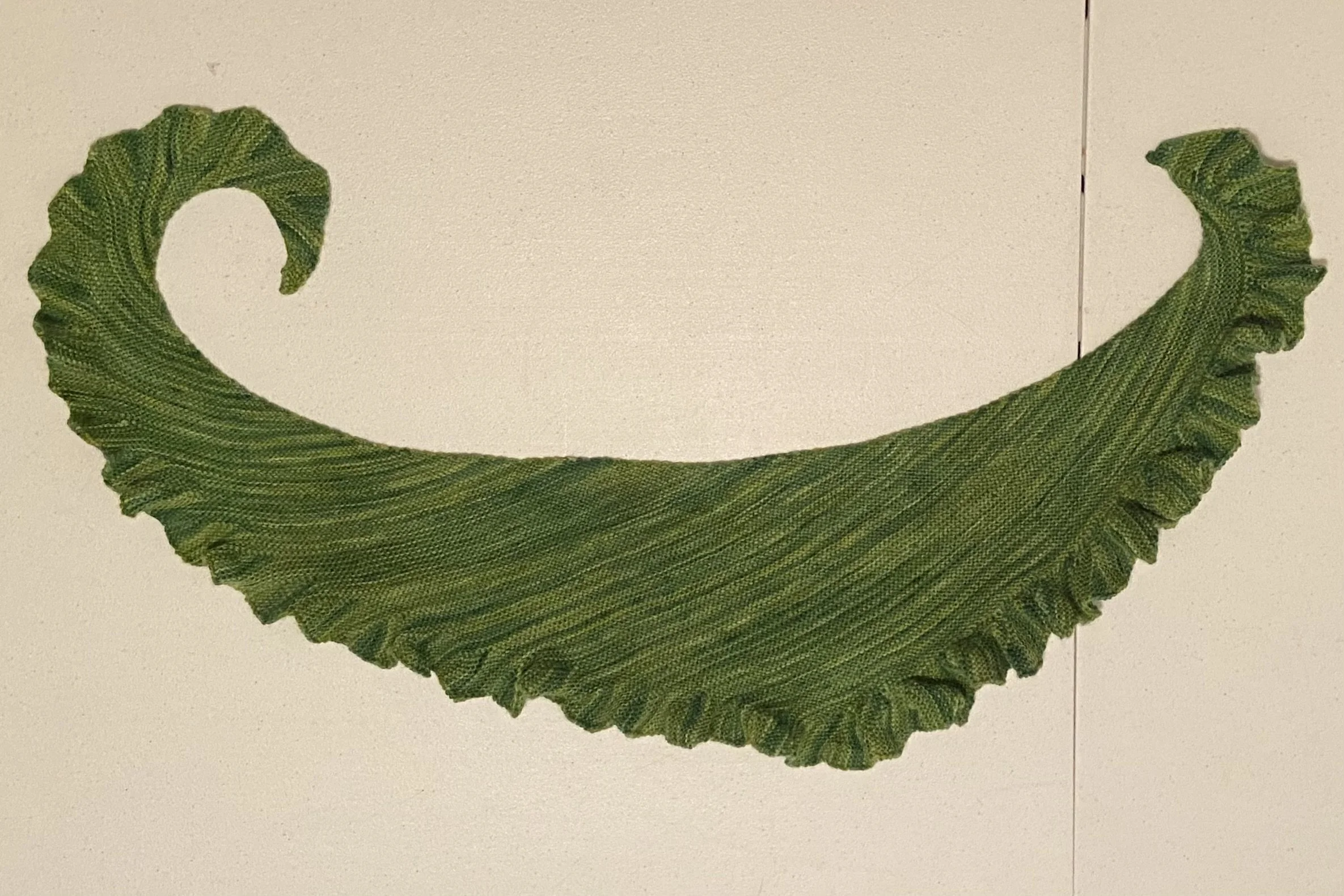Adventures In Behm Style
I’ve said it before but it bears repeating…knitwear designer Martina Behm is a genius. For today’s blog post, I’ve knit a little shawl (shawlette, if you will) of her design, one that I’ve knit many times before. It’s called Lintilla, and you can get the pattern here.
This shawlette, like many of her designs, can be done with any weight of yarn, and be made in any size, limited only by the amount of yarn you have available. I’ve knit it using two skeins of a wildly variegated sport weight yarn as a gift for a friend…it turned out quite large. I’ve knit it in a single skein of beautiful kettle-dyed purple fingering weight yarn, which came out a more moderate size. And now I’ve knit it using a variegated green fingering weight yarn that I’ve had in the stash so long that I’m not positive where it came from. I didn’t buy it…it was either a gift or else came in a goody bag at some (knitting) event I attended.
Most of Behm’s patterns are largely made in garter stitch, and I never properly appreciated the beauty of that stitch until I started knitting her patterns. If you use a nice yarn, the knitted fabric comes out bouncy and plush, not flat like stockinette. And also, if you are using a variegated yarn, it will look MUCH better in garter stitch than in stockinette. In a multi-colored yarn, stockinette tends to come out sort of randomly stripy, and not in a good way. By comparison, garter stitch blends the color from one row into the adjacent rows, softening the stripe effect considerably.
To start, you will have to weigh your yarn, because when you are down to 25% of the initial weight, then you’ll need to move to a different set of instructions in the pattern. My yarn weighed in at a nice even 100 grams.
Then you cast on just a very few stitches and start working the pattern. The basic idea is 10 rows (5 ridges) of garter stitch, increasing on the right-hand side with each row. And then you do 12 short row ridges, which form the ruffle on the left-hand side. I will say, while I’m thinking about it, that Behm’s instructions direct you to pick up the wraps on your short rows, which I do not do in garter stitch. So, as a not-random example, if a short row instruction tells you to knit 4, knit 1 stitch while picking up the wrap, and then wrap and turn, instead I would suggest you just knit 5, and then wrap and turn. That’s what I’ve done on all my (many) Lintilla projects and it works just fine.
Now, how to keep track of how many garter stitch ridges you have done so you will know when to do the next ruffle…well, there are a couple ways. You can place a stitch marker ON a stitch (not on the needles) in the ridge of the first row you knit all the way across when finished with the ruffle. That works fine, and in the last section of the pattern, I do it that way because I get too confused about where I am otherwise. But while you are still working the main body of the shawlette, before you start decreasing at the end, it’s relatively easy to just look and see where to start counting. In the picture on the right, the red line is the last (fifth) garter stitch ridge before the ruffle. That’s easy enough to spot. And then the garter stitch ridge above that (look for it a little right of the short row ruffle section) will be where you start counting for the next section.
When I got down to 27 grams left on my ball of yarn, I started the decreasing section. You can see clearly in the picture that the first part of the shawlette on the top has the garter stitch rows visibly feeding into the ruffles, whereas the decrease section has the ruffles sort of dangling off the decrease line. If you are paying attention, it is quite visible. But I think the way Behm manages a ruffle along the entire lower edge of the shawlette is quite clever, and I don’t mind that the decrease section looks a little different. Someone would have to be quite close and know what they are looking for in order to spot the difference. And quite frankly, anyone that you allow to get that close should know better than to comment on your knitting in anything other than a complimentary manner! (Brother, take a note.)
This shawlette is quite easy to block. Just soak it in tepid water with a little wool wash, gently squeeze the water out with a towel, and lay it flat to dry. I just patted it out on a table so that the garter stitch lines ran mostly straight, and fluffed the ruffled edge a little.
And it’s done! It went fast, it looks lovely on Lady Anne, and it will make a fabulous gift for some knit-worthy soul.
